
Paralyzed patients may soon enough be given the chance to walk again thanks to a new development called the 'bionic spine'. This tiny device was developed by researchers from Australia. It is injected into a blood vessel next to the brain, enabling it to read electrical signals, feeding this information into an exoskeleton, bionic limbs, or a wheelchair.
Consequently, this can give paraplegic patients more mobility using just their subconscious thoughts. In creating the bionic spine, Neurologist and lead researcher, Thomas Oxley, from the Royal Melbourne Hospital hopes that through this device, function and mobility will be returned to patients with complete paralysis .
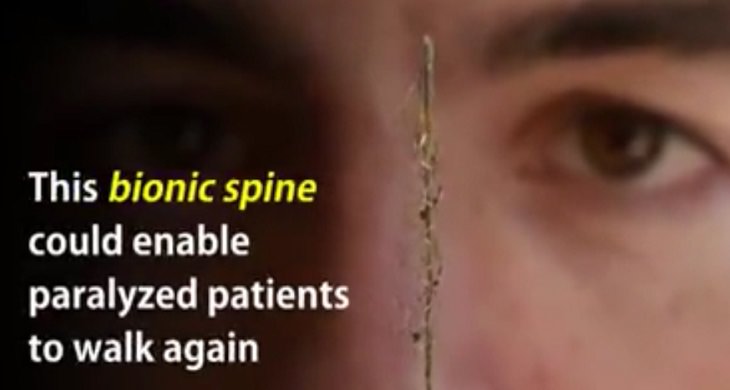
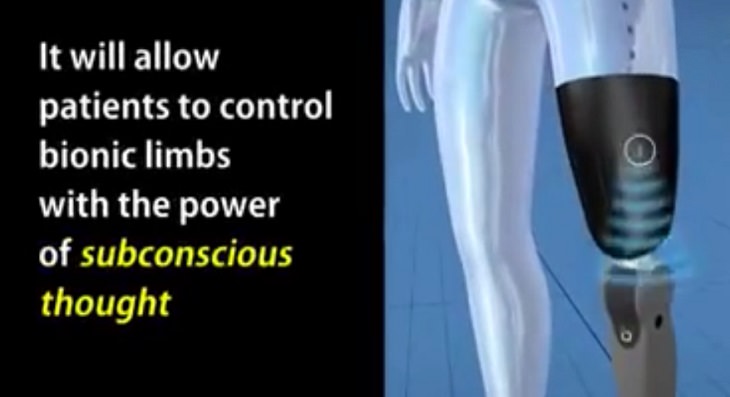
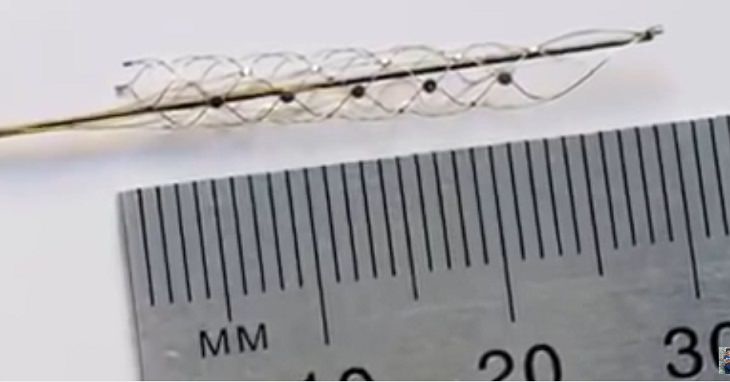
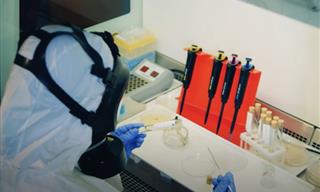 6:11
6:11
A Malaria Vaccine Is On the Horizon
Four malaria vaccines are currently in development or awaiting clinical trials. Here is a review of these vaccines.
 6:11
6:11
Your Voice is as Unique As Your Fingerprints
This fascinating video explains how this unique characteristic of humans works, and what makes our voices unique.
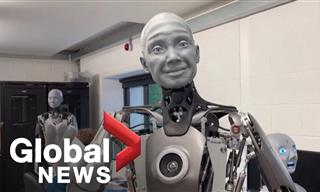 2:12
2:12
A Robot With Human Facial Expressions - Incredible!
The Ameca is the first-ever robot capable of imitating believable human facial expressions.
 10:06
10:06
Short Documentary: How Do Submarines Dive and Surface?
Ever wondered how submarines dive and surface? It's all quite fascinating...
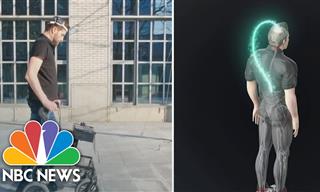 2:52
2:52
INCREDIBLE! Paralyzed Man Walks with Brain Implants
Watch how a paralyzed man starts to walk again using a device that reconnects brain with muscles.
 8:46
8:46
Life on Mars - What Could It Look Like?
From soviet orbiters to NASA rovers, Mars accepted many visitors from planet Earth in the past few decades. Will we ever be able to find life on the Red Planet?

Has Modern Technology Changed Our Cognitive Abilities?
Modern digital technology is everywhere and it’s changing how we think, how we behave and even how we feel about things.
 5:16
5:16
Fascinating: How Fast Does Our Brain Operate?
Ever wonder at what speeds our thoughts move?

10 Unanswered Mysteries You've Always Wondered About!
You might not have thought about the most curious cases of the bizarre things that we encounter every day.

The Difference Between Mined and Lab-Created Diamonds
If you're seriously considering buying a loved one a diamond, then we highly recommend that you read this informative guide first!

16 Interesting Things We Bet You've Never Seen Before
Once we have finished school and learned all the necessary skills at work, it may seem that no further studying is necessary. 16 interesting photos you wish you had seen in textbooks at school.
 6:25
6:25
Do You Like the Smell of Rain? This Is Why
One of the best things about rain and thunderstorms is that clean fresh smell afterward. But what actually causes that distinct scent?
 9:15
9:15
These Bizarre Mysteries Continue to Stump Scientists!
The world of science hasn't been able to explain several bizarre phenomenon yet. Let's take a look at a few of them.
 5:03
5:03
WHY is Sugar So Devilishy Addictive?
There seems to be a fascinating scientific explanation for why our will power is weak when it comes to sugar!
 4:13
4:13
What Does Medicine ACTUALLY Do In the Body? Fascinating.
What really happens in our bodies when we take medicine, have you ever wondered? This video will answer your question.
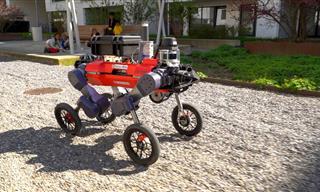 2:52
2:52
New Robots: This Robot Uses Both Wheels AND Legs
This robot can get just about anywhere in little time because it uses both wheels and legs to get over most hurdles.
 1:44
1:44
You Won't Believe What the Human Body Does in One Minute
How much do you think it is capable of doing in a single minute? Watch this video and you'll have your answer!
 50:02
50:02
Take a Trip Through the Universe and Witness its Beauty
Since its launch, the Hubble Telescope returned images of unprecedented beauty of a dynamic and changing universe. Take a look!
 6:05
6:05
The Real Reason Companies Prevent You from Fixing Things
Ever felt like you should be able to fix that broken gadget, but something's holding you back? Watch this to know more.

These 18 Photos Capture the Universe Like Never Before!
See the universe in a new light with these astonishing photos.

10 Obscure Inventions by World Famous Inventors
We’d like to bring your attention to 10 lesser-known inventions of famous figures in history, which will reveal a new and different side of these inventors to you.

These Engineering Failures Ended In Real Catastrophes
These are 10 of the worst engineering failures in history. These accidents had horrific results, and we must learn from them to never ever repeat them.
 1:29
1:29
A Must See: White Cells Devouring Bad Bacteria!
A real look at how white cells identify and consume harmful bacteria.

6 Fascinating Stories of Accidental Medical Discoveries
From penicillin to pacemakers, here are the medical breakthroughs that were discovered by accident.
 15:07
15:07
Amazing New Scientific Discoveries You Missed in 2024
There have been so many interesting scientific discoveries this year that we have missed!
 20:04
20:04
Emotions Explained: The Science Behind How We Feel
Neuroscientist and psychologist Dr. Richard J. Davidson answers some fascinating questions about emotions you would never expect.

9 Great NASA Inventions That Took the World By Storm!
For around six decades, NASA have been inventing top-notch products. Here are nine great examples!
 4:11
4:11
This Video Will Show You Where We Are in the Universe!
Where is our galaxy in the known universe? This video will fly with you to ever-larger destinations, showing you our little planet's cosmic address from a very large viewpoint.
 11:28
11:28
India Built a Monster Dam That Controls the Weather!
The Polavaram Dam doesn't just control floods - it moves water between regions and much more!

Let's Learn All About Your White Blood Cells
White blood cells (WBCs) are the part of your immune system which is responsible for fighting infection. Learn all about them here!

Science Breakthrough: An Immunization Against Skin Cancer?
This scientific breakthrough offers hope for those who are struggling with skin cancer. You are now invited to discover more about this revolutionary vaccine.
 12:35
12:35
The World's Most Dangerous Blood Type
Today we will discuss the most dangerous blood type to have, the one you cannot get an infusion for. Let's delve right in and learn about this rare blood type.
 13:01
13:01
Understanding the Aging Process of Our Body Parts
Find out how every organ and body part in our body changes with age.
 5:50
5:50
The Rise of the Machines: Can Humanoid Robots Help Us?
Will humanoid robots change the way we work forever?
 3:10
3:10
Watch the Best HD Panorama Photo of Mars Ever Taken
Watch an incredible 1.8-Billion-Pixel panorama of the planet Mars that was recently captured by NASA's Curiosity rover.

Can One Photo Really Tell How Good Your Eyesight Is?
Scientists say that this single photograph can tell you whether you have good vision or not. Who can you see in the image?

6 Harmful Toxins You Didn’t Know You Encounter Daily
These toxic chemicals can be found in everyday products and can be extremely dangerous to us.

10 New Things We've Learned About The Brain
We have learned some astonishing new things about the human brain in recent times.

Study Says: With Age, Come Certain Cognitive Abilities
a study published in August 2021 in the journal *Nature Human Behavior reveals surprising findings that challenge this assumption and may be of great interest to all of us.

2023 in Science: Biggest Discoveries You Missed!
Let’s take a look at the most amazing scientific discoveries that made news this year.

See the World From Up Close - 17 Fascinating Macro Photos
Seeing ordinary objects like honey, paracetamol, and snow through a microscopic lens teaches us how beautiful and intricate they really are!

12 Bizarre Scientific Facts You Never Learned at School
The scientific facts we collected in this list aren't the kind of stuff you'll see in a school curriculum.

Travel From the Sun to Pluto With Our Interactive Guide!
The solar system is a fascinating place, and we wanted to bring you an interactive journey that you can use to travel through it. Enjoy the journey!

5 Robotics Trends Anticipated in 2024
What does 2024 have in store for the field of robotics?
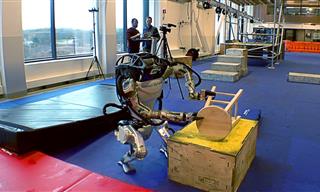 1:48
1:48
Boston Dynamic's Robot Does Some Incredible Things...
Boston Dynamics shows us again what her lead robot can do.

Science News: New Wonder Mushroom Cleans the Air
Let's learn about a magical new mushroom that is not only enriching the soil for farmers but also capturing CO2 from the air!
 7:56
7:56
Asteroid Mining: Why it's the New Trillion Dollar Business
Get ready to learn how asteroid mining could potentially transform our world.
To enable your Ad-Free Subscription, please fill the fields below
Your subscription was successful, now you can enjoy an ad-free experience!!
Note: To make sure you get no ads, please make sure to log in to your account. If you are logged in already, then refresh the page. The subscription can be cancelled at any time.


